We (User-Friendly), have identified a common gap in the marketing approach of EA organisations that we deem to be vital for success. Long-term planning. Many (if not, most) organisations are entirely focussed on short-term marketing and dedicate too little (if not, next-to-no) time on long-term brand marketing.
Short-term marketing: Any marcomms that communicates to warm targets that are ready to use your service right now (Likely ~5% of your target segment)
Long-term marketing: Building the awareness of your brand for those targets that are not yet ready to act, but should rank you highly when they become ready (Likely ~95% of your target segment)
Our ‘competitors’, those competing for our target audiences’ energy, time and focus, likely dedicate an industry norm of, on average, 60% of their marketing to long-term brand-building activities and 40% on short-term activations. And here’s why you should be doing the same.
What is long and short term marketing?
It is easiest to understand the distinctions between short and long-term marketing through the sales funnel.
I prefer the funnel as created by Tom Roach as it provides useful insights into the relationships with each segment than any others I have seen and been asked to use. In most funnels, the segments express the potential journey a target audience might follow, from unaware of your existence > to being interested in engaging > to completing an objective e.g. donating or joining a newsletter.
Broadly speaking, anything that gets a target to do something is considered short-term marketing, or activation. It presumes the target knows you in some capacity, they’re interested in what you have to offer, and are ready to act - they are in the market right now for your offering. This is from the middle to the bottom of the funnel, ‘nudging’ through to ‘connecting’.
For most, (and perhaps particularly EA’s) it’s the alluring, highly measurable, metric-happy, click <> make a thing happen <> watch the people come.
What in most cases we are missing is the ‘building’ of future demands, the foundation all yet-to-come success will be built upon. This audience doesn't know us yet, or are not yet ready to engage. This target is out-market and they don’t want to act right now. Ads calling for subscriptions, giving away freebies or asking for donations are unlikely to perform well in this segment. This is the long-term neglected area that I’d like to discuss.
Given that it’s reasonable to assume that of your entire target market, only a very small portion is currently ‘in-market’ (meaning they are ready to act now), it leaves the vast majority of your target market ‘out-market’ (they are not ready to act) left off the table for your short-term focused ads.
The actual breakdown of your current in-market and out-market will always vary for each specific brand's context, but it’s reasonable to assume that there will always be far more of your target not ready to act as those that are ready now.
How do they relate to each other?
The esteemed Binet and Field provide us with foundational research in this area in The Long and Short of It. This important work, “[...] focuses on a growing tension that exists between short-term response activity and long-term brand-building.” Over years of tracking 000s of campaigns, they measured the impact of short-term activations compared to long-term brand marketing.
Their finding: you need both short AND long-term marketing.
Short-term marketing activates the current ‘in-market’ audience (around 5%) into action. But what happens when you’ve captured that 5%? If you’re not also growing a presence in the minds of the ‘out-market’ (normally about 95% of your target), you’re missing activations of the future and shortchanging any growth possibilities by ignoring most of your target audience. The success of short-term marketing is completely reliant on the awareness building of your brand over a longer period of time, increasing the ‘base rate’ of overall activations.
Short-term impact is not an overarching measure of your marketing overall and over time. If this short term marketing is your sole focus, you could be neglecting the longer-term uplift that’s slower to build, but will generate the greatest long-term success.
We have a limited budget, which one should we focus on?
Both, always both, commonly recommended as a 60% / 40% split, but yours may be split slightly differently for your given context (see charts below). You may also need to adjust your focus each year. If you use a set of metrics across your funnel for each stage, ‘building’, ‘nudging’ and ‘connecting’, you can see how healthy it is at each level and which gaps you most readily need to plug through this diagnosis.
For example;
- your website converts really well (connecting), you’re generating steady donations from newsletter subscribers and are maintaining users, but you’re not well-known: perhaps you could focus more on long-term and feeding your growth (building).
- you’re getting lots of web traffic and good success with media outreach (building/nudging), but no conversions and therefore no one signing up to your course: perhaps you need to focus on your bottom of funnel conversion (connecting).
This split seems to echoed in the below chart which focuses on the not-for-profit sector:
An interesting and recent development to the long-term-short-term theory led by research firm System1, shows that short-term activations do not (well) support long-term brand building as discussed by Mark Ritson here, he writes “[...] the danger of overinvesting or only investing in short-term tactical activation now becomes all the more apparent, given the general inability of this kind of advertising investment to build brand for future sales. It leaves the brand at risk of ever-decreasing circles of demand while mopping up the current in-market potential.”
The ROI/ROAS problem
ROI: Return on Investment
ROAS: Return on Advertising Spend
As a dedicated EA marketing agency, we are often exposed to the lack of long-term marketing which is holding back future successes. Organisations request help from us for short-term activations without the underpinning of long-term brand building.
Them - ‘Hey UF, we would like you to design a digital ad that will get people to X’
Us - ‘Sure, we would love to help. How warm is the audience we’re targeting?’
Them - ‘This will be our first post’
Us - ‘Ah.’
A part of this, perhaps unsurprisingly, is the focus on metrics like Return on Investment (ROI) and Return on Ad Spend (ROAS) as a measure of success. As a movement built on research and measurements, it’s hardly surprising that our marketing typically follows similar patterns of focus, however it’s critical that we grow our marketing function beyond this kind of measurability bias and here’s why…
First, let’s talk ROI
ROI is a helpful guide to calculate the value of your output versus the cost. But it is a guide, not a target. As Goodhart’s Law dictates, any measure that becomes a target stops being helpful, and actually, in this sense, can be highly damaging. The reason using ROI as a target is damaging is because to ‘improve’ your ROI, all you have to do is spend less (and less and less, until you shrink your market share).
ROI should be used as a guide that you monitor to assess if you’re getting good value for your spend and not aimlessly posting and crossing your fingers. But if you use it as a target, you’re likely to strangle your future successes for the sake of spending decreasing amounts on fewer positive brand outcomes.
Now ROAS
Return on Ad Spend (ROAS) is a partner to ROI, and similarly, it has substantially concerning issues related to it. It’s the ROI-in-action, measured via a time bound action occurring based on a very specific user journey from a specific ad. Notwithstanding how much this measurement can vary across platforms, this measure too easily pretends to be the whole story and ignores swathes of other data.
The story looks like this:
- You spend money on some ads: 1, 2 & 3
- You receive a donation on your website
- You see that the donor clicked ad 1 to get to the donation page
- This happens 10 more times
- Up the budget on ad 1 and bin the rest
What the story is missing:
- The donor first learned about your organisation 2 years ago via the distinct brand campaign that you ran
- They spoke to a friend who saw the same campaign, they liked it too
- They didn’t think about you for a few months
- They overheard someone at work talking about your cause area
- They started to look for a service offering like yours
- They remembered you
- They typed in your name into Google and checked out your site for 30 seconds
- They got distracted with something else but made a mental note to think about it more
- They checked your website a few more times, not acting
- They saw ad 1 on their Facebook, clicked and finally donated
ROAS tells you to focus all of your efforts and resources into ad 1. A broader understanding of marketing considering long-term marketing would tell you that the brand campaign you ran was just as much of this story as any other part of this journey. Ex-Adidas marketer Simon Peel says, “It is a fraction taking credit for the whole'' or as written by well-renowned marketer Tom Roach, “Imagine a football manager believing their centre forward is entirely responsible for every goal so ditching their defence and midfield for 10 centre forwards. ROAS is only measuring what happens in the final third of the pitch.”
Ironically, the best ROAS will be driven by having an audience that consider you more salient (over others), like you the most and are most ready to give you their attention (over other similar brands). That’s all driven by really good long-term brand marketing, warming up and drumming up the audience for tomorrow. You want an excellent ROAS, then you still need to start at long-term brand building.
Secondly, using ROAS as a target also incentivises you to target the lowest hanging fruit, or as Tom Roach writes: “it’s not just like targeting low-hanging fruit, but targeting falling fruit”, that may well have come to you anyway. The cheapest conversions are going to come from people who could end up finding you anyway, right? So targeting your marketing activity on ROAS actually could be hugely counter-intuitive and ineffective.
Measuring awareness/brand campaigns
A quick word on measuring long-term marketing.
I know that measurability of work is an important part of any marketers work, but even more so within the EA world. I also believe that one of the most probable reasons long-term marketing is focused on less, is the belief that it is less measurable. But this isn’t true - you can use many of the same platforms to test or run brand awareness campaigns, you’re just not watching clicks or likes, but %+/- in awareness e.g. Meta allow you to run a ‘Have you heard of this brand’ survey to see if you are boosting how many people have heard of you.
Conclusion
I suspect there are some that may not be convinced by this as working on future demand can feel counter-intuitive and less immediately gratifying or pressing, but I would strongly urge you to consider the following:
- Extend your marketing resources to brand building. This is creative work that is distinctive, memorable and drives salience for your brand for future users
- Don’t measure the success of long-term brand building with bottom of funnel metrics like conversions or ROAS, they’re not for that right now - they are for future growth. If you want to measure them, the metrics need to be awareness based such as Share of Search or brand awareness survey data
- Don’t chase better ROI/ROAS as it’s an ever decreasing circle. They inform, they are not the target
- Don’t be burdened by your desire for nice-looking spreadsheet metrics, reducing your entire marketing function to basic tactics with easy measures that forget the rest of the story
Need help with this topic or other marketing/branding/design/website/campaign strategy work?
We would love to hear from any organisations wishing to discuss their marketing strategy (or to create one!). That’s why we exist. We want to bring industry best practices to this community to inform and multiply the efforts of your work.
letstalk@userfriendly.org.uk
https://www.userfriendly.org.uk/
Want to discuss further?
We would love to hear from those who do and don’t agree with our approach, and especially those who would be interested in funding further work on this important topic.
Some useful reading:
https://www.marketingweek.com/ritson-brand-building-boost-short-term-sales/
https://www.youtube.com/watch?v=98gfXVurfzI&t=1647s
https://ipa.co.uk/media/9252/10-effectiveness-in-context-killer-charts.pdf
https://ipa.co.uk/knowledge/publications-reports/effectiveness-in-context
https://thetomroach.com/2020/11/15/the-wrong-and-the-short-of-it/
https://thetomroach.com/2022/10/22/beware-of-roas-rois-dangerous-digital-twin/

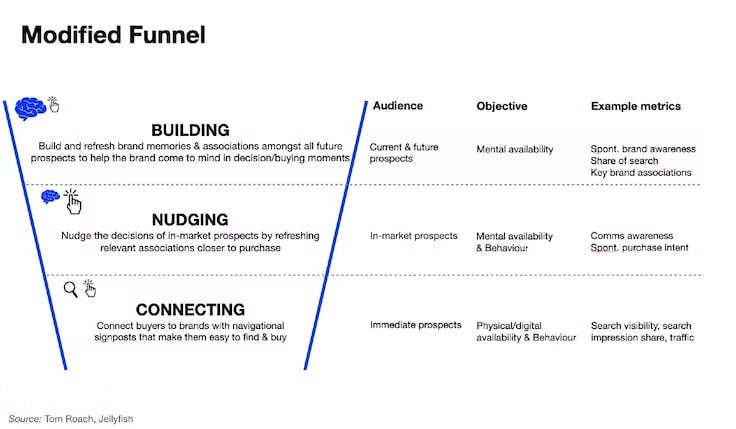
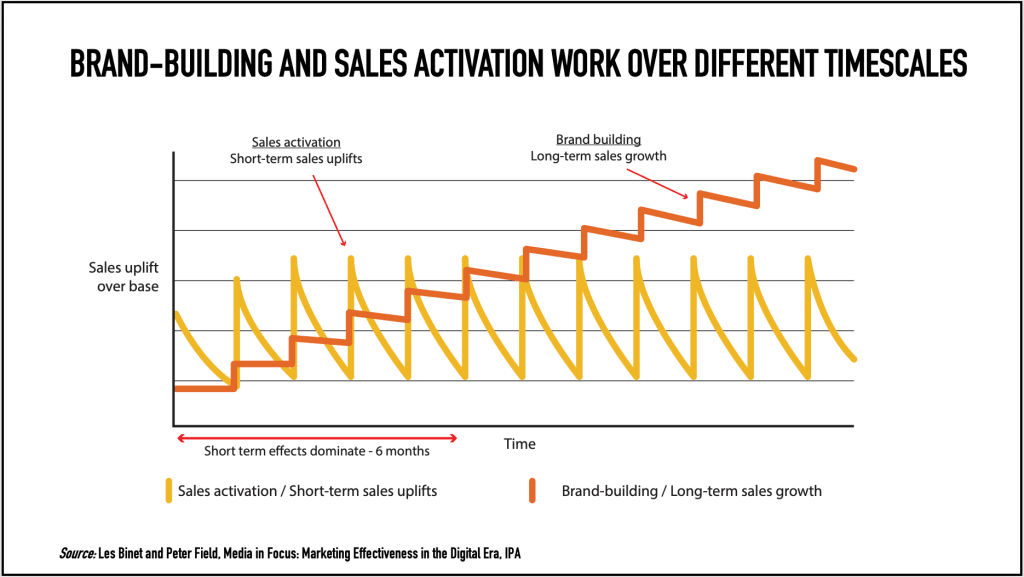
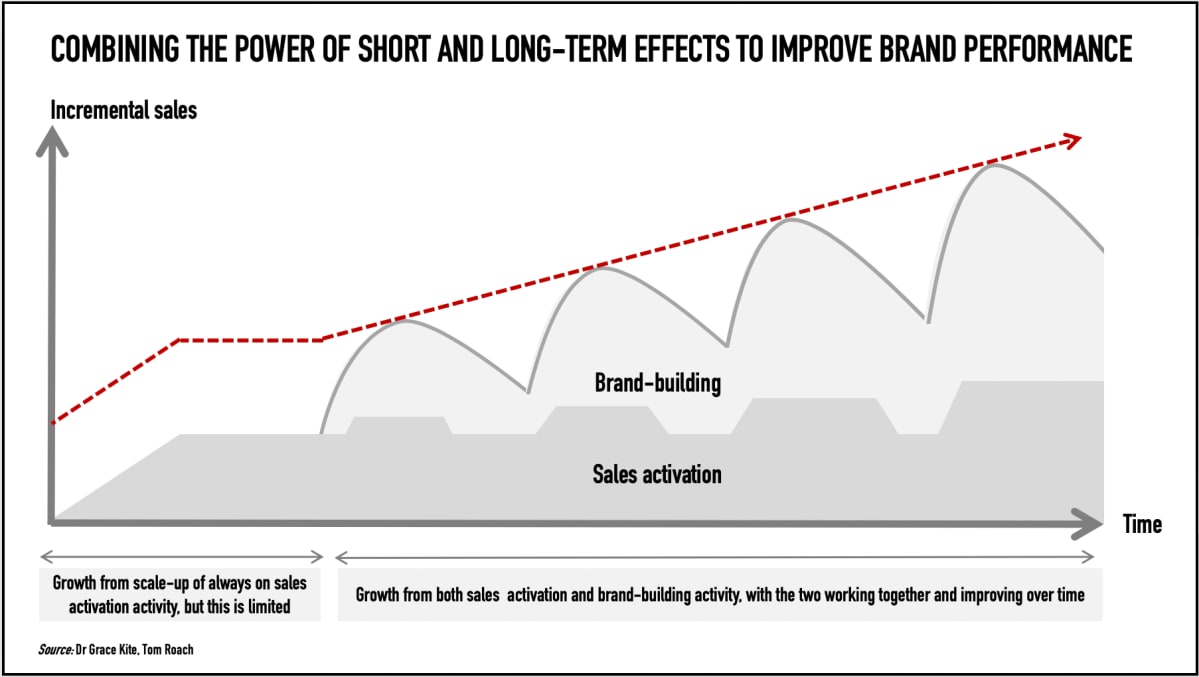
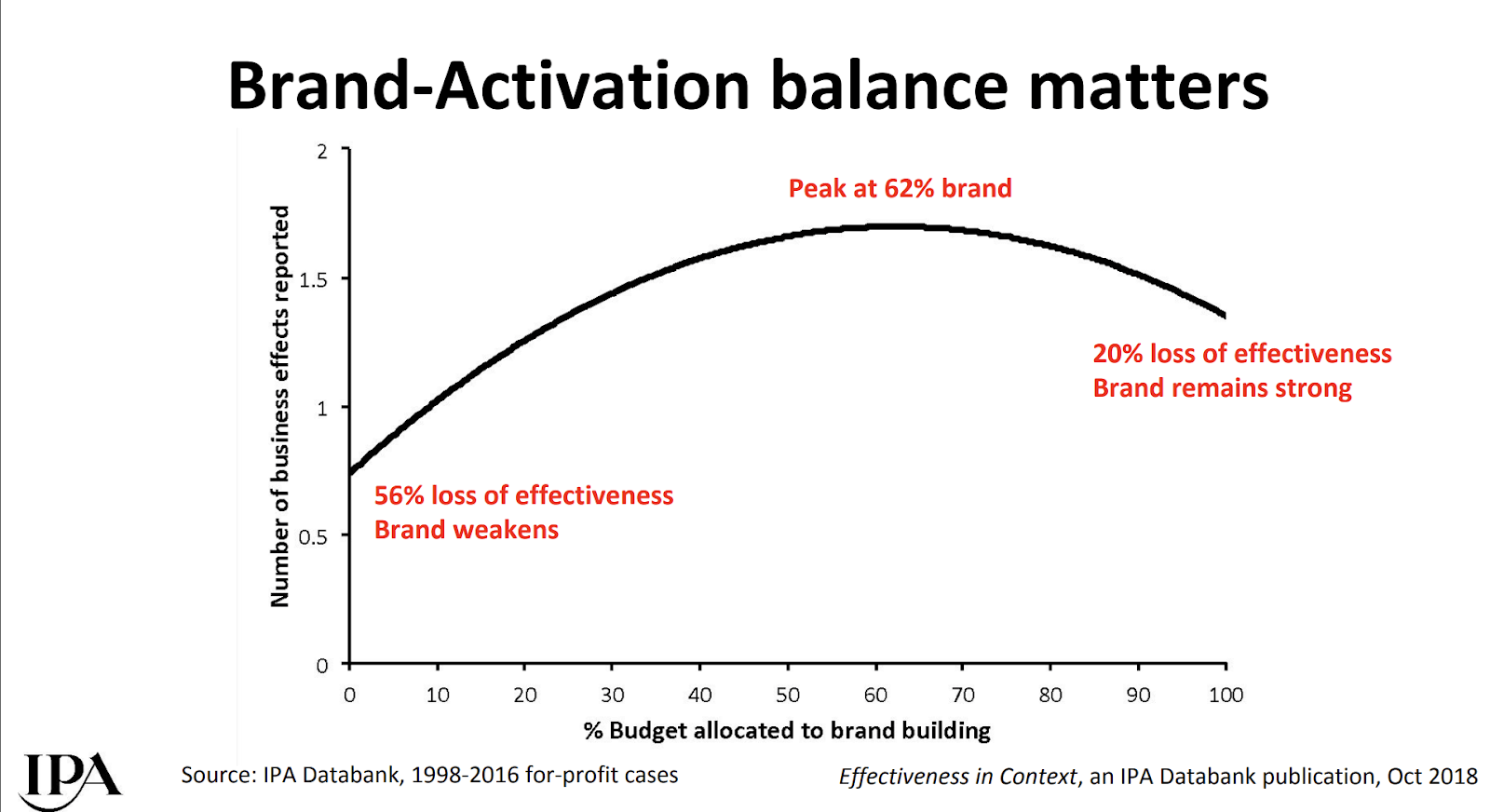
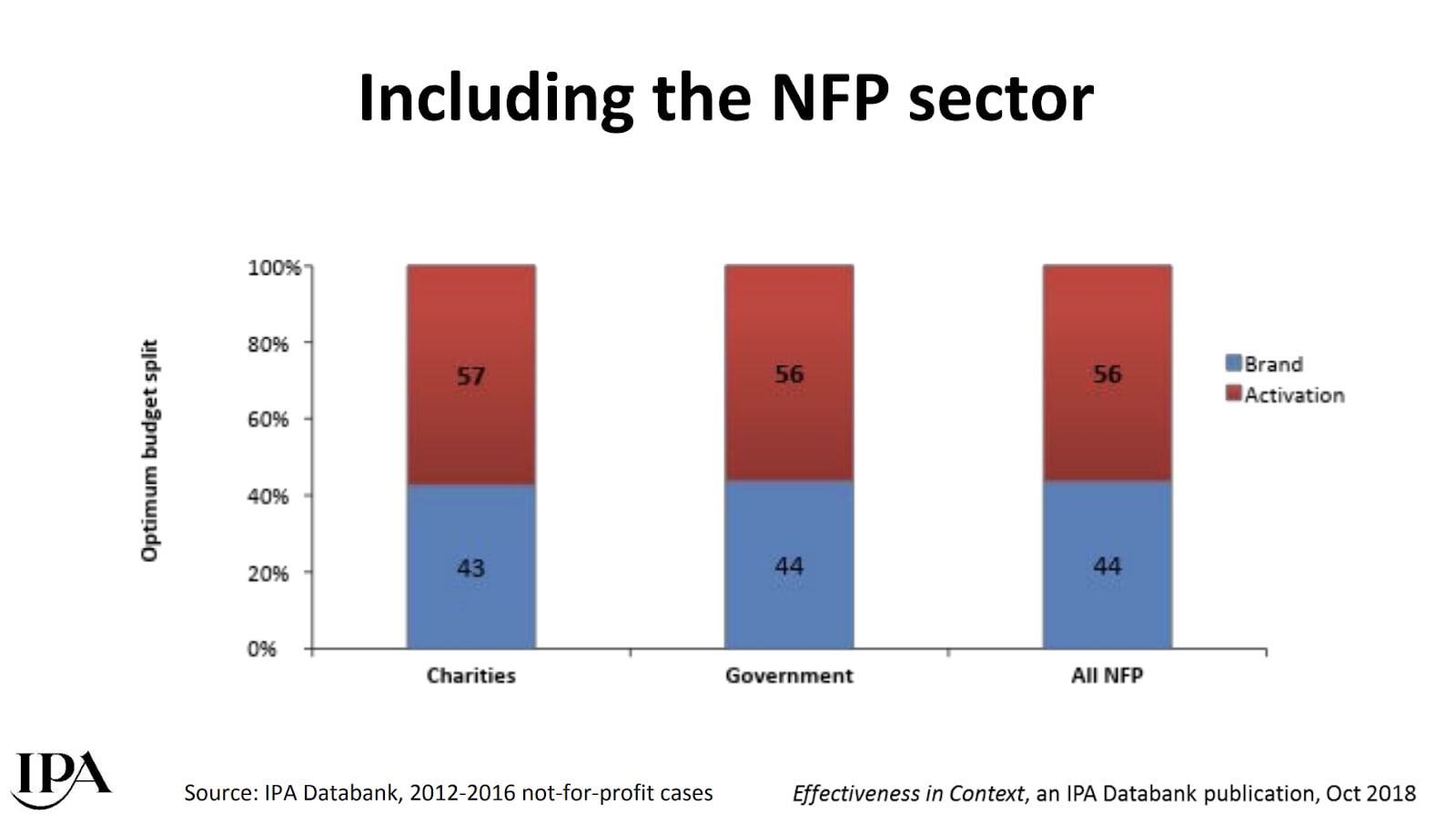
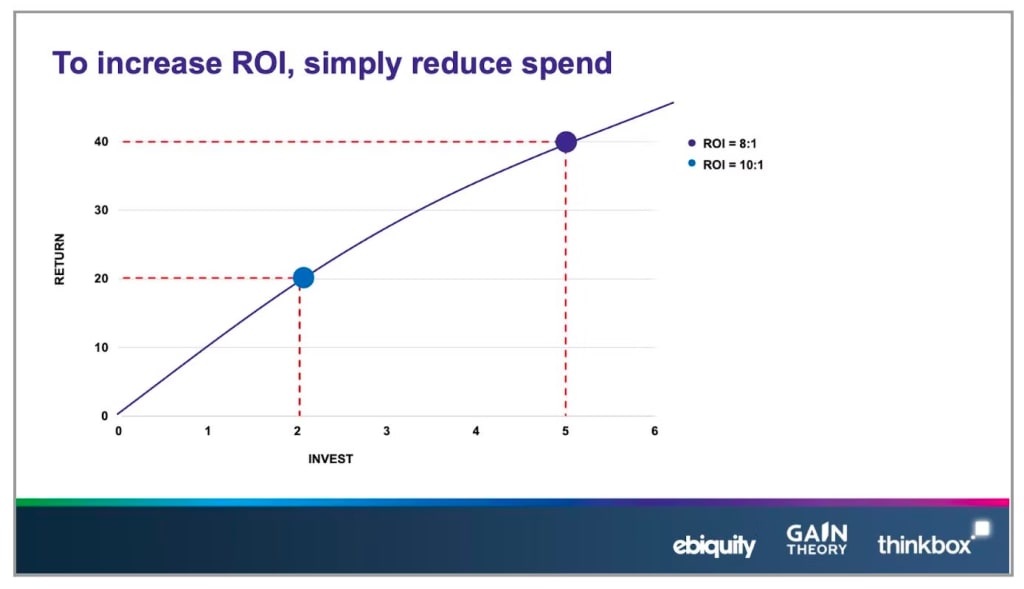
This is a great post!
I assume that you are, but better safe than sorry: Are you discussing this with Chris Lloyd at Good Impressions who's currently " investigating whether paid ads can be an effective fundraising tool" for EA organizations?
Hey! Thanks.
We are in close contact with GI and talk regularly :)
Great post, thanks for sharing. To provide a bit of context could you sketch out what an increased emphasis on long-term brand marketing might look like for EA orgs?
For example, what might it look like for:
Thanks for commenting.
Sure, I'd be happy to.
This first example of a research org is needing short-term action, so long-term branding for them would have ideally predated this need and built a bigger audience that knows their brand and would be likely to support. For this current need, they are using short-term activation marketing, but would get much greater success if they'd already committed to building their audience over a longer time. So the current ads for this purpose wouldn't be long-term, but would be support by past long-term marketing.
The startup charity aiming to acquire talent has 5 years to imbed their brand into the minds of likely future candidates. This long-term marketing could be relevant sponsorships, attending conferences, ads that are focused on making their brand memorable.
The "shopfront" EA org should be generating ads that are purely designed to capture peoples attention, impart the brand and some credibility. These could be 6 sec YouTube ads, social ads, sponsorships...
Broadly speaking, all long-term marketing has one major focus, and that is to be interesting enough to be remembered. It should therefore hone into emotions, humour, surprise - something that will leave an impression on the audience so that they are effectively warmer to the brand for when they (in the future) might come to want to engage.
If you consider this Rightmove ad, it's entire remit is to make you feel something, which you then associate with the brand. And it has no call to action. It's about logging the brand into your mind for whenever you might come to need to look for a place to live.